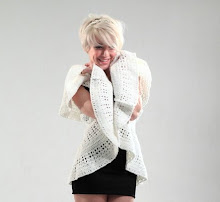SEMINAR
SYNERGIES BETWEEN THE ART WORLD AND
THE LUXURY INDUSTRY
Key points:
· Promotional role of art and artists in this industry
· 3 case studies
· Fashion awards and art awards given by luxury companies
· Future developments
PROMOTIONAL ROLE OF ART AND ARTISTS IN THE INDUSTRY
“Luxury and art are both expressions of emotion and passion; therefore, the idea of integrating artwork in a store environment is a question of affinity”
Yves Carcelle, President and CEO of Louis Vuitton
During past years, there have been many new creative collaborations, exploring fresh avenues for synergies and business development between the art world and the luxury industry. Today, luxury brands regularly collaborate with artists to develop products and marketing materials, and even mobile museums.
There are a number of key reasons why luxury brands choose to make a cultural investement:
· Luxury brands heighten their aesthetic and perceived value. For market strategists in the luxury industry contemporary art has been very much a way to add value both in terms of prestige and profitability.
· Artists are feted by leading brands. While a relationship between art and fashion has always existed, over the last decade, collaborations between luxury brands and contemporary artists have gone beyond mere artistic partnerships towards a new kind of luxury branding. And, this in turn has had an impact on the contemporary art world itself.
· Cultural investment is also seen as being helpful for brands that need to reposition, or that are entering a new market and need to establish their identity quickly. The benefits are diverse too. Cultural investment reflects the brand in the right light. It can help to attract a new sought-after customer profile or it can entertain and maintain the loyalty of existing customers by providing a positive brand experience
· It’s also widely seen as a great PR vehicle. The attraction is that the arts are forward-thinking and mould-breaking. It is beneficial to be associated with these qualities that commercially translate into the perception of being trend-setting
CASE STUDIES
1. Fondation Cartier pour l’Art Contemporain
In the 1980s, relationships between luxury brands and artists were advanced when Alain Dominique Perrin created the Fondation Cartier. It is a center for contemporary art that presents exhibits by established artists, offers young artists a chance to debut, and incorporates works into its collection.
Araki, Marc Newson, Philippe Starck, Murakami, and Matthew Barney are some of the artists that have worked with the Fondation Cartier.
“The Fondation has given Cartier a positive image in the eyes of people who are not interested in jewellery or who would never in a thousand years wear a Cartier bijou. But now they look at Cartier more positively, with respect, and that’s exactly what I wanted.”
Their aim has always been to give freedom of speech to the artists and not interfere in the process of creation. It is linked to an image strategy as well as a subject of pride for the Cartier employees.
2. Louis Vuitton’s Young Arts Project
It is a creative and cultural collaboration between the super brand and five leading art institutions in London: Hayward Gallery, Royal Academy of Arts, South London Gallery, Tate Britain and Whitechapel Gallery.
The iconic brand launches a three-year long support project for young artists. The three-year program, led by Louis Vuitton and SLG, which also incorporates the help of artists Chris Ofili and Charlie Dark, will give 200 underprivileged young Londoners real access to the inner workings of the art world. It aims to provide the participants with the skills and experience necessary to pursue a career in the arts - as curators and press officers, as well as artists.
1. Paul Smith in-store art exhibitions
Paul Smith stores, whether in London, Milan or Hong-Kong showcase not only his collections, but also the works of contemporary artists.
This celebration of contemporary British art and artists springs from Paul’s own personal affiliation and admiration.
By choosing to curate such unique, quirky and highly personal exhibitions, Paul Smith is reinforcing his iconic status as a quintessential British brand.
Among the more artistically-prone stores, there are: Paul Smith GLOBE, a store in the Heathrow Terminal 5 airport and SPACE Gallery, his first store in Japan, where the designer has hosted exhibitions from artists such as Valerie Phillips, Richard Woods, Thomas Giddings or Marcus James.
Fashion awards and art awards given by luxury companies
· MaxMara Art Prize for women, in collaboration with the Whitechapel
The prize winner gets an all-expenses paid six months residency in Italy. Maxmara gets an enviable foothold and high profile in the London art world.
- The Fondation d’ Entreprise Montblanc de la Culture
Its purpose is to support and honour modern day patrons of the arts who have given their time, energy and money in order to encourage cultural life to flourish.
Such consistent patronage gives Montblanc the stature of nobility across the international cultural landscape.
FUTURE DEVELOPMENTS
Though it may be true that the sheer number and variety of collaborations proposed in recent years have somewhat diminished their impact, and that some may have got out of hand with exceedingly commercial intentions, ties between the goods industry and the art world should not be abandoned. There is no doubting the excellent results of some of the collaborations. Contemporary art infused luxury with a great energy that resonated with consumers; and for artists, a new world of commercial opportunity was opened, separate from the pure art world.
And, in light of the current economy, perhaps the art world and luxury need each other now, more than ever.





